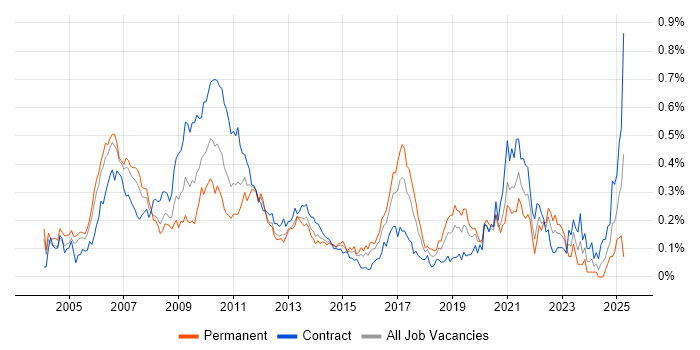Product Analyst
Central London > City of London
The median Product Analyst salary in the City of London is £65,000 per year, according to job vacancies posted during the 6 months leading to 11 May 2025.
The table below provides salary benchmarking and summary statistics, comparing them to the same period in the previous two years.
|
|
6 months to
11 May 2025 |
Same period 2024 |
Same period 2023 |
| Rank |
145 |
- |
219 |
| Rank change year-on-year |
- |
- |
+56 |
| Permanent jobs requiring a Product Analyst |
3 |
0 |
5 |
| As % of all permanent jobs advertised in the City of London |
0.15% |
- |
0.11% |
| As % of the Job Titles category |
0.16% |
- |
0.11% |
| Number of salaries quoted |
3 |
0 |
5 |
| 10th Percentile |
£42,600 |
- |
£61,000 |
| 25th Percentile |
£51,000 |
- |
£62,500 |
| Median annual salary (50th Percentile) |
£65,000 |
- |
£75,000 |
| Median % change year-on-year |
- |
- |
+25.00% |
| 75th Percentile |
£76,250 |
- |
£95,000 |
| 90th Percentile |
£83,000 |
- |
- |
| Central London median annual salary |
£65,000 |
- |
£75,000 |
| % change year-on-year |
- |
- |
+25.00% |
For comparison with the information above, the following table provides summary statistics for all permanent IT job vacancies in the City of London. Most job vacancies include a discernible job title that can be normalized. As such, the figures in the second row provide an indication of the number of permanent jobs in our overall sample.
| Permanent vacancies in the City of London with a recognized job title |
1,922 |
3,219 |
4,451 |
| % of permanent jobs with a recognized job title |
92.94% |
95.86% |
96.15% |
| Number of salaries quoted |
1,471 |
2,556 |
3,735 |
| 10th Percentile |
£41,250 |
£41,125 |
£42,500 |
| 25th Percentile |
£52,500 |
£53,000 |
£55,000 |
| Median annual salary (50th Percentile) |
£72,500 |
£73,750 |
£75,000 |
| Median % change year-on-year |
-1.69% |
-1.67% |
+3.45% |
| 75th Percentile |
£95,000 |
£95,000 |
£97,500 |
| 90th Percentile |
£120,000 |
£112,500 |
£112,500 |
| Central London median annual salary |
£72,500 |
£72,500 |
£74,372 |
| % change year-on-year |
- |
-2.52% |
+2.58% |

